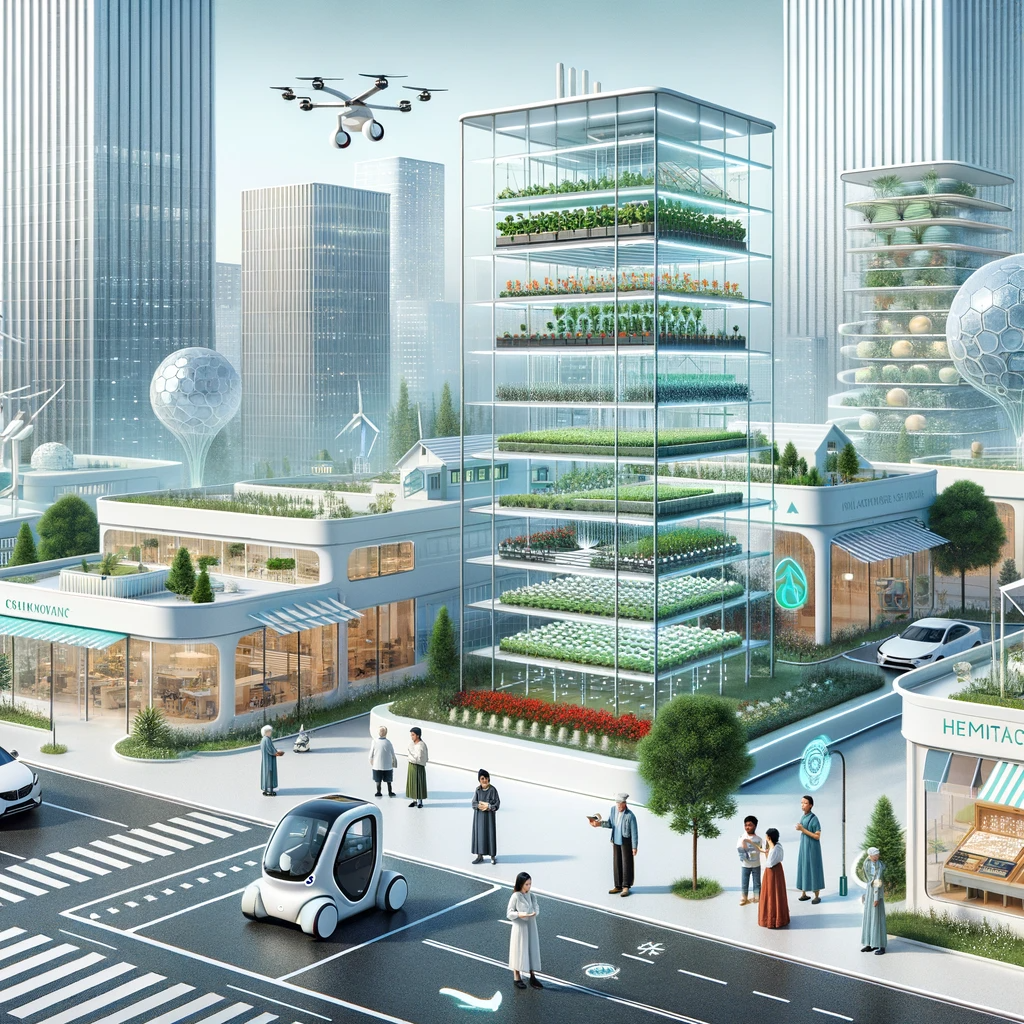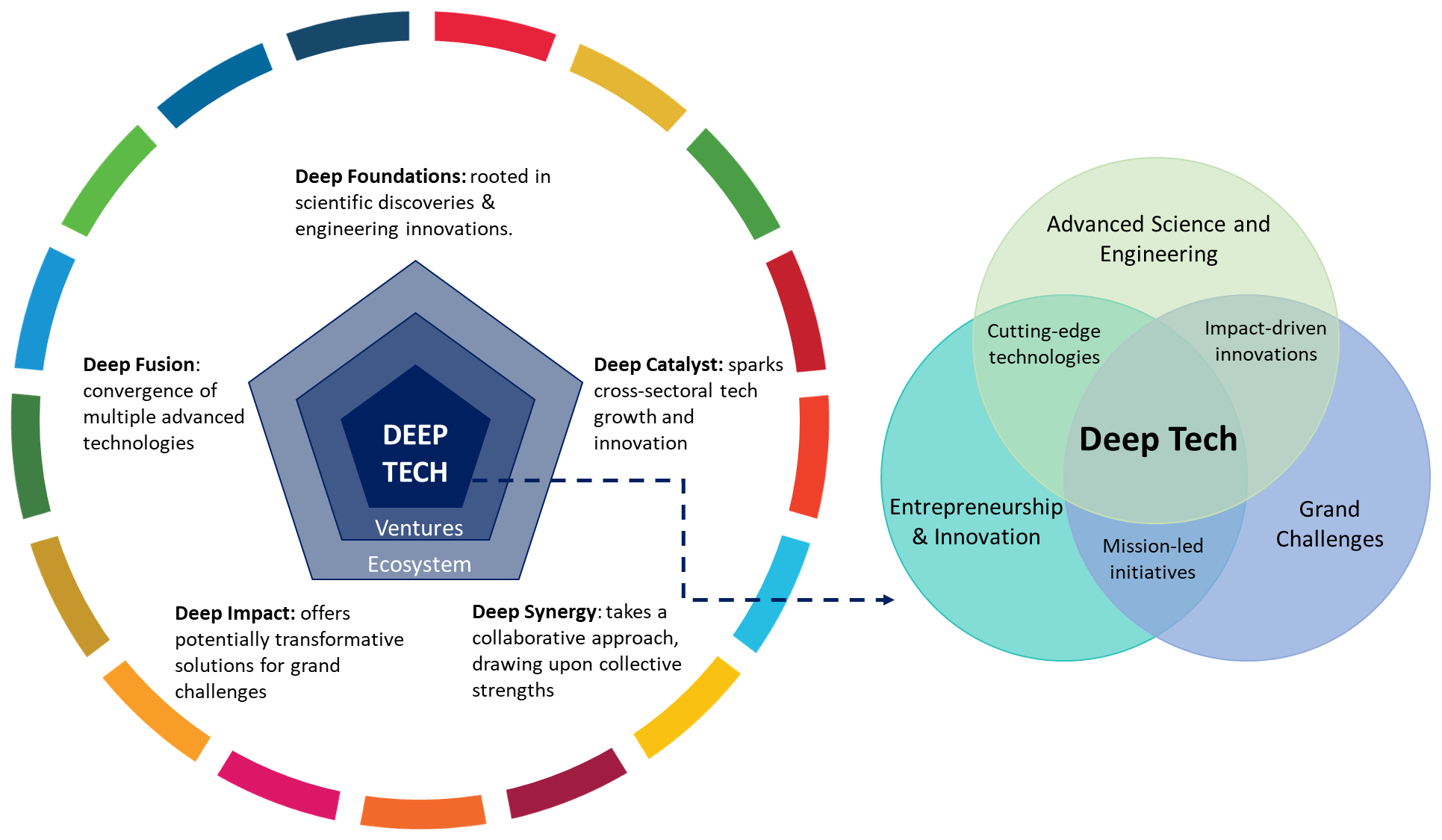Deep Tech Series Vol. 1: Harnessing Deep Tech for Global Development
November 9, 2023

Deep tech stands at the forefront of innovation, offering potentially transformative solutions to address persistent global challenges.
With persistent global challenges continuing to shape our world — from environmental degradation to socio-economic disparities — the need for transformative solutions has never been more pressing. Deep tech, standing at the forefront of innovation, offers potentially transformative solutions to address these very issues and many deep tech ventures directly contribute to the SDGs. The UNDP Singapore Global Centre for Technology, Innovation, and Sustainable Development will be running a series examining the potential and realities of harnessing deep tech for the achievement of the SDGs.
What is Deep Tech?
Deep tech is fundamentally rooted in scientific discoveries or engineering breakthroughs, translating theoretical possibilities into real-world applications. Instead of business model innovation, deep tech ventures rely on leveraging novel technologies as enablers of competitive advantage. In contrast to conventional tech, which often focuses on refining existing technologies and incremental improvements, deep tech, often navigating through lengthy and uncertain R&D cycles, seeks to redefine boundaries and reshape the established paradigms. Some examples of deep tech are quantum computing, synthetic biology, and advanced biomimetic materials.
Deep tech's distinctiveness lies in its problem-oriented focus, supported by a vast ecosystem of diverse actors, and the convergence of multiple technologies. Rather than isolating their focus on cutting-edge technology itself, most deep tech ventures adopt a mission-led approach by focusing on tackling pressing issues and fulfilling unaddressed needs in both business sectors and the wider economy. This mission is often underpinned by a collaborative ecosystem — including academia, public institutions, venture capital, and other types of financing. Furthermore, the approach isn't one-dimensional, their innovative prowess is marked by a convergence of technologies as 96% of deep tech ventures harness at least two technologies, with 66% integrating more than one cutting-edge solution.

What is Deep Tech?
Why it Matters for Development
While the world faces daunting challenges in meeting the majority of the 2030 Goals, deep tech could offer a potential avenue for acceleration. Deep tech may provide alternative solutions and new perspectives to some of the enduring development challenges. It has the potential to introduce novel infrastructures and technologies, which, if applied effectively, may accelerate the progress towards the 2030 Goals.
The SDG report 2023 reveals that 48% of the SDG targets are off track, with 37% showing no improvement or even falling below the 2015 baseline. Against this backdrop, deep tech may offer innovative solutions for pressing challenges such as land over-exploitation and escalating water scarcity. Over 77% of the Earth’s land has been modified by human activities, and urban populations facing water scarcity are set to surge from 930 million people in 2016 to 2.4 billion people by 2050. Cellular agriculture, an alternative to resource-intensive traditional farming, could significantly mitigate resource consumption and greenhouse gas emissions, presenting a sustainable food production method. Moreover, advanced materials like superabsorbent hydrogels, which can capture moisture from humid air for water supply and absorb and hold water up to 150 to 1,500 times their dry weight, could be a promising solution for relieving the elevating water stress in arid regions.
Deep tech's impact may be manifold, creating positive spillover effects that extend its reach beyond specific industries. Technology-driven changes can often do more than just solve specific problems; they foster entire ecosystems of opportunity. With this in mind, research highlights that the emergence of high-tech jobs has a multiplier effect, generating new opportunities for those on the lower rungs of the skills ladder. For every 10 new high-tech jobs created, six lower-skilled workers find employment. What's even more remarkable is the gravitational pull of these innovation ecosystems, attracting and nurturing a rich tapestry of talent, especially in STEM.
The strategic essence of deep tech lies in its ability to act as a catalyst that may accelerate the advancement of both existing and other emerging technologies. Quantum technologies, for instance, may expedite material sciences research, which could lead to innovations in sectors such as energy and healthcare. Similarly, advanced semiconductor technologies like microelectronics and photonics, could support progress in domains like medical imaging and renewable energy solutions. Deep tech therefore has the potential to accelerate advancements across diverse technological fields, shaping broader national development.
While deep tech holds great promise, it's not a silver bullet. Establishing a thriving deep tech ecosystem presents many challenges, particularly for countries at the earlier stages of their tech journeys. However, countries can leverage their comparative advantages by focusing on specific niches and collaborating with more established players for collective benefits. Integral to this process are foresight exercises, which allow actors to anticipate and prepare for different eventualities. At the UNDP Singapore Global Centre, we're delving deep into both the world of cutting-edge technologies and the anticipatory strategies that ensure sustainable success, with the intention to foster a collaborative approach between countries as they navigate the complex landscape of deep tech and optimize their strengths for a sustainable future.
This is the first blog of the Deep Tech Series. Click here for the full list of blogs.

 Locations
Locations